“Man is born unto trouble,” says Job, “as the sparks fly upward,” and, he points out, this “affliction cometh not forth of the dust, neither doth trouble spring out of the ground.” An engrossing study of the root cause of this “trouble” was made in the West, in this century, by Eugene O’Neill in Desire Under The Elms. But are we Indians aware of Vyasa’s fascinating portrayal of “Desire Under the Kalpataru” in the Mahabharata? Such a remorseless expose of the frailties that the flesh is heir to, spanning the entire gamut of human existence, is unrivalled in world literature. Leaving aside the sheer narrative brilliance of Vyasa, it is the perception of over-arching symbols, such as the Kalpataru, which gradually dawns on the readers, stirring the innermost depths of their psyche, as they voyage across the one hundred thousand verses of this ocean among epics; that fascinates them, compelling them to return, time and again, to the Mahabharata.
To appreciate the thematic brilliance of this concept, it is first necessary to recount the story of the Kalpataru, the Wish-fulfilling Tree, described in eidetic detail by Krsna in the beginning of chapter 15 of the Gita. Its roots are in the heavens and its branches permeate the cosmos, paralleled in occidental mythology by the Norse Yggdrasill. The parable has been recounted by P. Lal in his introductory essay to Barbara Harrison’s Learning About India, and by Christopher Isherwood in Vedanta for the West.
Into a room full of children at play walks the proverbial “mama” (maternal uncle)” who invariably “knows better.” He tells them to lift up their eyes, look out of the window and see the huge Kalpataru outside. He tells them that they should cast aside their silly indoor games, and go to the tree which will grant them whatever they wish – the real stuff! The children rush out, stand under the all-encompassing branches, and ask. They ask for what all children crave: toys and sweets. The tree grants them their wishes. But with it, they also get a bonus: the built-in opposite of the wish! Along with the toys they get boredom; and with the sweets they get tummy-ache. Sure that something has gone wrong with their wishing, the children ask for bigger toys and sweeter sweets. The Tree obliges, along with greater boredom and more painful stomach-ache. Time passes. The children grow up into young men and women. Their wishes change with their age. Now they “know more”. They ask for wealth, fame, power and sex. Unquestioningly, the tree grants their desire, but also gifts them cupidity, insomnia, anxiety and frustration. Time passes. The askers are now old. They gather in three groups under the tree. The first group exclaims that all this is an illusion. They are fools and have learned nothing. The second group is “wiser” and decides to wish better next time. They are greater fools and have learned less than nothing. The third group, disgusted with everything, asks for death. The tree grants their desire and, with it, its opposite, re-birth, and under the same tree. For, where can one be born, or re-born, but within the cosmos! They are the most foolish of all.
All this while, one child has been unable to move out of the room. Being lame, he was pushed aside in the rush to the door as his playmates ran to get to the tree. He has been riveted to the window, watching the lila (the play) of the Kalpataru unfold itself. He has watched his friends make their wishes, get them along with their built-in opposites and suffer; yet, compulsively, continue to make more wishes. Transfixed by this fascinating play and counterplay of desire and its fruits, a profound swell of compassion wells up in the heart of this lame child, reaching out to his companions. In that process he forgets to wish for anything (not even remembering to forget). In that moment of spontaneous compassion for others, he has sliced through the roots of the cosmic tree with the sword of non-attachment, of nishkama karma. He, alone, is the liberated one, the mukta-purusha.
It is this parable of the Kalpataru, whose roots are upwards and whose branches pervade the cosmos, which is the over-arching symbol encompassing the Mahabharata.
Pururava, monarch of the lunar dynasty, is the first of those driven by desire, who believe “The world will be your wish- fulfilling cow” (Gita 3.10). Infatuated by the heavenly courtesan Urvashi, his desire to possess her is granted. However, it is inevitably accompanied with the penalty of losing the very object of his desire. In the agony of that loss, he even goes mad. This is not the only instance of the fruit desire bore for this king. Pururava once stole the wealth of some Brahmins out of greed, and refused to return it.
As smoke smothers fire,
as dust films glass,
as womb enfolds seed,
So greed destroys judgment.
Greed is a fierce fire.
It destroys judgment.
Greed is a fierce fire.
It destroys judgment.
It fools the wise.
It destroys the atman. (Gita, 3.38-39)
He was cursed by the Brahmins with loss of his prosperity, the precise opposite of his desire.
Pururava’s grandson is Nahusa, who is crowned king of the gods in Indra’s absence, but then falls prey to desire for Saci, Indra’s wife. The result is that he is cursed by the sages, whom he forces to carry his palanquin to meet Saci, and turns into a python, crawling in the dust.
Nahusa’s son is Yayati, the most famous instance in world mythology of lust and its doom. Driven by lust, he possesses Sarmistha in secret, and is struck with senility. Those very sons, “children of his heart, ” whom he has fathered on Devayani and Sarmistha, scornfully turn away from his anguished plea to assume his decrepitude so that he can enjoy the pleasures of the flesh for some time more. Even when that wish is granted, he finds that lust only consumes and does not satisfy. Later, desiring heaven, he achieves it, only to be thrown down from there because of his overweening pride in his merit. Yayati is, indeed, the archetypal figure of desire and its fruits as given by this cosmos, which is the Wish-Fulfilling Tree.
Yayati’s wife, Devayani, is herself a telling example of this parable. Obsessed by the desire to avenge the humiliation suffered at the hands of Sarmistha, she achieves her goal of turning the princess into her hand-maiden. Eager to prove that despite being a Brahmin’s daughter she can best the daughter of the Danava King, she over-rules the objections of the reluctant Yayati to an inter-caste marriage, and compels him to marry her. Soon, thereafter, she loses her chosen husband to her hand-maid! Further, not only has she only she only two sons by him while Sarmistha has three, but also none of her sons inherit the throne, despite being elder. It is Sarmistha’s youngest son, Puru, who is chosen by Yayati as dynast for having willingly parted with his youth for his father’s sake. In a similar way, one of his descendants, Devavrata, will sacrifice his youth to subserve his father’s sexual appetite.
It is in the same dynasty that Samvarana is born, who is so sun-struck by Tapati, daughter of Surya, that he neglects his kingdom. Significantly, as with his descendants Santanu and Pandu and his ancestor Pururava, desire seizes him in its constricting coils while he is engaged in hunting. Lust goes hand-in-hand with anger and cruelty:
Her body shone
Like a straight flame…
She stood, a black-
Eyed beauty on the hill-top,
Statuesque,
Like a golden girl.
The hill, its creepers,
Its bushes, all flamed
With the golden beauty
Of the golden girl…
She had trapped his mind
And his eyes. He stood
Transfixed, as if tied
With ropes, as if senseless. (Adi parva, 173.26-28, 31)
This is precisely the point that Krsna makes in the Gita, that lust, hiding in the senses, destroys judgment like an all-consuming flame. Samvarana’s condition, when Tapati suddenly disappears, is like that of Pururava bereft of Urvashi:
Like a man crazed
He wandered in the woods
… the love smitten
king fell on the ground.
The imagery used by Samvarana in his appeals to Tapati revolves around raging fire, senselessness, fury, loss of self-control—all the typical signs associated with the madness desire is seen to inflict on its victims.
Then a fearful-faced messenger came
And shouted loudly, thrice:
Lost! Lost! Lost!
And I fell from Nandana. (Adi parva, 89. 17-20)
The fourth, Samvarana, gets his desire at the cost of his kingdom. Neither he, nor his descendant Shantanu, appear to have drawn any lessons from the tragic lives of their ancestors.
Ironically, Shantanu’s name means “the child of controlled passions,” as he was born to his parents in their old age. He seems to have a special penchant for unknown tribal women encountered by the riverside:
He stood there,
Entranced,
All his body
In horripilation.
With both eyes
He drank in her beauty
And wanted
To drink more. (Adi Parva, 97.28)
Smitten by the sight of Ganga—who had wantonly solicited his father Pratipa and was politely rejected as not belonging to the same caste — he unthinkingly accepts all her conditions so that he can make her his own:
Captivated by her charms,
The king was not conscious of
The months, seasons, years that rolled by.
The lord of men enjoyed her whenever he wished. (Adi parva, 98.11,12)
The Kalpataru grants him that sexual gratification which he so passionately desires like Pururava, Yayati and Samvarana. But, along with it, he has to undergo the repeated experience of watching seven of his sons being consigned to the river, one after another, year after year, by that same object of his violent infatuation, Ganga. Well might we say,
“La Belle Dame sans Merci
Hath thee in thrall!”
In his old age, this “child of controlled passions” is infatuated with yet another maiden-by-the-river, Matsyagandha, fish-odorous, who has been transformed by the sage Parasara into Yojanagandha, lotus-fragrant-for-a-yojana (a unit of distance), in return for having enjoyed her body. Once again, Santanu has no regard for propriety, status, or the rights of Devavrata, his Crown Prince. He must have her:
She was fragrant,
Beautiful,
Santanu saw her,
And desired her…
The fire of desire
Ravaged his body
…desire maddened him.
He kept thinking of
The daughter of the fisherman. (Adi parva, 100.49,56,75)
The symptoms could virtually be describing Samvarana’s state after Tapati vanishes. The same discrimination-destroying, judgment-clouding fire of desire afflicts both Samvarana and Santanu. In both cases, it is the kingdom which suffers. Santanu himself, having learned nothing from his experience with Ganga, dies, leaving behind two children, both weaklings. both die prematurely. The elder, Citrangada, dies unmarried. The younger, Vicitravirya, is another instance of the Kalpataru in action. Under the instructions of Satyavati (Santanu’s second wife), Bhishma (his son by Ganga) obtains not one, but two brides for his foster brother, so that the future of the dynasty is assured:
Both were tall.
black, wavy hair.
Fingernails and toe nails
Painted red, pointed.
Hips round and full.
Swelling and large breasts.
Vicitravirya,
driven by passion, became
A victim of his own lust. (Adi parva, 102.65, 66)
He dies after seven years without any issue. Thus, the dynasty of Pururava comes to an end.
What has Satyavati got out of the Kalpataru? As a nubile maiden, her dearest desire was to rid herself of the powerful fishy odour. This she was granted, at the cost of her virginity. After Santanu met her, the desire of her father (or foster-father, if we accept the story that king Uparicara Vasu of Cedi was her real father) is that through her he should be the dynast of Hastinapura. The Kalpataru grants this wish through what becomes renowned as the most terrifying of all vows: Devavrata becomes Bhishma (one who has taken the vow of celibacy) so that Satyavati’s children alone succeed to Santanu’s throne. Santanu himself does not live long after this marriage, and Satyavati becomes the Queen Mother, with minor children. She sees one killed in a skirmish, and the other die of consumption, both without issue. Now, both the Dasa-king, her father, and she find that the greatest obstacle to perpetuating the dynasty of Santanu is precisely that very vow which they had demanded as the security for ensuring their hegemony over Hastinapura in perpetuity through their children! Bhishma stonily refuses to break his vow and father progeny on the widows of Vicitravirya by following the custom of niyoga (sexual union with another’s wife).
Satyavati, like the people clustered under the Kalpataru in the parable, has not learned anything from her experiences, so far, of desire and its fruits. “Hungry for grandsons,” she summons Vyasa, her illegitimate son by Parasara, and orders him to practice niyoga on Ambika and Ambalika. Vyasa advises a year-long vow on their so that they purify themselves of the lust they have been tainted with through seven years with his foster brother. Satyavati cannot wait. Her judgment is warped by her insensate desire to have grandsons immediately. She leads her daughters-in-law to believe that Bhishma will be coming to them. Hence, being wholly unprepared for the horrendous looks and malodorous body of Vyasa, they give birth to the blind Dhritarastra and the anaemic, jaundiced Pandu. Even now, Satyavati has learned nothing. She had wanted grandsons at any cost. The Tree fulfilled her desire; but, along with it, gave her offspring incapable of being proper monarchs. Yet, she again asks Ambika to like with Vyasa. Ambika deceives her, and sends in her maid instead, who is without fear and aversion, and has only profound respect for the sage. Their child is the virtuous Vidura, possibly the sole true grandson of Satyavati, born of her son and of a Sudra (low caste) maid like herself. He is the only one born whole in mind and in body, and is untouched by the craving to rush to the Kalpataru. He, too, however, dies childless. Her other grandson, Pandu, dies, like his putative father Vicitravirya, without having been able to father progeny.
Thus, in her lifetime, empire-hungry and progeny-hungry Satyavati sees her husband, her two sons and one grandson die; the eldest grandson born blind; the youngest one not qualified to be king, being base-born, despite being the only fully healthy and virtuous issue, (although by that argument her sons, too, should not be kings, as she is a fisherman’s daughter. Hence, probably, the legend of her having been fathered by the king of Cedi on an apsara-turned-fish).
Perhaps, after Pandu’s death, the coming of the Pandavas to the Hastina court and the sibling rivalry which breaks out, Satyavati might have come to realize what it means to ask of the Kalpataru. And, perhaps because of that realization, she meekly obeys her son Vyasa when he advises her to leave the court and retire to the forest with her daughters-in-law:
The green years of the earth
are gone. . . . .
Do not be a witness
to the suicide
of your own race.
Satyavati and her grand daughter-in-law Kunti share various similarities. Uparicara Vasu of Cedi sends off his fish-born daughter Matsyagandha to be brought up by a Dasa-chief among fishermen. Pritha is the daughter of King Sursasena of the Vrishnis who gifts her to his cousin Kuntibhoja, who renames her Kunti, respectively. Both Satyavati and Kunti have pre-marital sons. In both cases the issues are discarded and reappear full grown, as does Devavrata. One appears before us as the sage Krsna-Dvaipayana Vyasa, the Dark Island-born Arranger. The other comes as Vasusena, born with the wealth of skin-armour and ear rings, also called Karna. Both Parasara and Surya gift-armour and ear rings, also called Karna. Both Parasara and Surya gift Matsyagandha and Kunti with unimpaired virginity as the reward for becoming willing partners in their concupiscence. This virginity is not merely a physical attribute, but very much of a psychological quality with they share with Draupadi, who is said to regain her virginity before living in turn with each of her five husbands. In that respect, Draupadi is carrying on a special trait found long back in the ancestry of the family into which she marries.. Yayati’s daughter Madhavi also had this boon of regaining her virginity even after giving birth to a child. On the strength of that, Galava loaned her to Haryasva, Divodasa, Usinara and Visvamitra to fulfil his guri-daksina (graduation fee pad by pupil to teacher).
The precise opposite of this can be seen in the Madri type of woman, who is dependent on what others think, regardless of what her real opinions might be, and always acts as a female counterpart to a male and is not “one in herself.” The psychologically virgin woman is not, however, thus dependent. Dr M. Esther Harding writes in Women’s Mysteries (Rider, 1971), “as virgin, she is not influenced by the considerations that make the nonvirgin woman, whether married or not, trim her sails and adapt herself to expediency…she does what she does not because of any desire to please, not to be liked, or to be approved, even by herself; not because of any desire to gain power over another, to catch his interest or love, but because of any desire to gain power over another, to catch his interest or love, but because what she does is true. Her actions may, indeed, be unconventional. She is what she is because that is what she is.” (pp.125-6) such a personality is wholly integrated and autonomous-in-herself, defining herself in her terms and not dependant on others for finding and acting out her role in life.
Kunti is by no means the conventional wife typified in Madri. She is one found fit by Durvasa to be the custodian of the mighty spell which forces even gods to respond to her desires for progeny. It is she who, single-handed, provides Pandu with five foster-children through herself and through Madri, and guards them amid all the venal politics of the Kuru court till they can hold their own in life.
What did Kunti ask of the Tree? Her first desire was to test the efficacy of Durvasa’s mantra. This desire was granted promptly, swiftly followed by the anguish of having to abandon its fruit and , later by the excruciating agony of being forced to remain a silent spectator to this death at the hands of her fourth son. In abandoning her first born, she is akin not only to her “direct” grandmother-in-law Satyavati, but also to her grandfather-in-law’s first wife, Ganga, who threw into the river seven sons, one after another. Of course, Pritha herself is her father’s discarded offspring.
Kunti’s second desire is for Pandu. Pandu is the only one in the Kuru dynasty to go to a svayamvara (husband-choosing), and this is ere Kunti chooses him above everyone else. Immediately thereafter, she loses him to Madri, who is brought by Bhishma to Hastinapura after payment of heavy bride-price, in accordance with the Kuru tradition. So, the Tree granted her Pandu, but with it , gave her the opposite: the anguish of losing the object of her desire to another and, ultimately, seeing him die in the arms of that another:-
Princes of Vahlika! (she tells Madri)
You are fortunate indeed…
I never had the chance to see
his face radiant in intercourse. (Adi parva, 25.23)
Even in death, Kunti is not allowed by Madri to accompany her chosen beloved. It is Madri who immolates herself with Pandu’s body.
Kunti’s sole desire now is to establish her sons as rulers of a kingdom. This desire, too, is granted. But in its wake she has to undergo a triple agony: first, she has to witness the enslavement of her children and the attempted stripping of her daughter-in-law in the royal court; then, she has to bear their exile to the forests for thirteen years; ultimately, she has to see her first-born slain, when defenceless, by her fourth-born, at the urging of her nephew, Krsna, who alone, besides herself and her first son, knows of the relationship. How tragically ironic it is that, by revealing the secret of this relationship on the eve of the battle to Karna, Kunti should have effectively ensured the death of Karna and the victory of her other sons. For, while they know only that they are fighting to slay the detested charioteer’s son, he knows that he is facing his cognate brothers, whom he has sworn not to harm!
Kunti desires that marriage should not sunder the unity of her five sons. Hence she strives to ensure that Draupadi does not belong only to Arjuna who won her. The Kalpataru grants her this too, with the consequence that Draupadi, though five-husbanded, is actually anathavat, without a husband, to protect her from molestation by Duhsasana, Jayadratha, Kirmira and Kicaka. None of the five husbands turns back to help her, let alone wait at her side, when she falls down, dying on the slopes of the Himalayas during their last journey together.
Like Kunti, Draupadi’s burning desire, born as she is full-grown out of the sacrificial fire, is to rule over the kingdom of Hastinapura and thus avenge the humiliation of her father at the hands of the Kauravas. It is worthwhile, at this point, to note that although it is the Pandavas who imprison Drupada at Drona’s command, his vengeance is directed against the throne of Hastinapura, of which Drona is a servant. This is a legacy of the ancient rivalry between the Pancalas and the Kurus which began when Samvarana left his kingdom defenceless in his infatuated pursuit of Tapati. Drupada arranges the contest for Draupadi’s hand in such a fashion that only an archer of Arjuna’s skill can succeed, and through that alliance he hopes to wreak his revenge.
Draupadi’s interaction with the Kalpataru is indeed an engrossing spectacle. Her desire for a kingdom is granted as Indraprastha comes into being, “a miracle of rare device.” Along with this she is granted her first taste of sweet revenge when she sees Duryodhana flounder into the pool created by illusion. The consequences are terrible: first, the kingdom is gambled away; then, she herself is unspeakably humiliated in public. Like Satyavati, Draupadi does not learn from these experiences. Her consuming passion remains revenge, now an intensely personal raging desire. That, too, is granted her by none other than the Kalpataru itself, incarnated in the person of Krsna (as he describes himself in the Gita.) She gets a field of ashes to rule over, with not a single son left alive to enjoy life with.
What of Draupadi’s desire for Arjuna— that desire which Yudhishthira coldly cites, without so much as a backward glance at her prone, dying form, as he cause of her inability to reach heaven in the physical body? By the time it was Arjuna’s time to live with her, he was away as an exile in the course of which he had no scruples in obliging the amorous Ulupi, wooing Citrangada and abducting Subhadra. This last he did only after obtaining the consent of Yudhishthira. Vyasa does not tell us that the eldest Pandava bothered not to pass on the information to Draupadi. He was, perhaps, pleased that Arjuna should have fallen in love elsewhere and ,particularly, that it should have cemented an alliance with the powerful Krsna clan. So, when her beloved Arjuna returned to Indraprastha, it was with Subhadra, who had his heart. The greatest archer won her, but was never hers. Even in the thirteen-year exile, she was bereft of his company, for he was sent off by Yudhishthira to obtain celestial weapons. When he returned, it was as a eunuch, merely enquiring of her how she had managed to escape the murderous clutches of Kicaka’s henchmen, who had dragged her off to be burnt with his corpse. Never did Brihannala (Arjuna’s name during the period he had turned eunuch) raise a voice in her defence, either in the Kaurava court, or in the court of Virata (where the Pandavas had to live incognito).
Draupadi’s relationship with the Kalpataru goes back to her previous birth, as narrated by Vyasa to Drupada, Apparently, she had carried out severe penance and begged off Siva that he grant her a husband. The moment she wished this, it was granted, but with a five-fold bonus, because, it seems, she had said “husband” five times! Thus, the cosmos grants her intense desire, but also provides its built-in opposite by multiplying it five-fold.
In being five-husbanded, she resembles her mother-in-law Kunti, who has “known” five men or gods: Surya, Pandu, Dharma, Vayu and Indra. She is also like her great-grandmother-in-law Satyavati, in being of unknown parentage and brought up by foster parents. Both are famous for the enchanting odour emanating from their dark bodies. Satyavati is renowned as the dark (“kali”) “Yojanagandha” (whose scent extends for a yojana); while Draupadi-Krishna’s complexion is like that of the blue lotus and the sweet scent of her body wafts for a krosa. Both are left with no children. One (Satyavati) built up the huge Kaurava dynasty, while the other (Draupadi) annihilated it. Neither seems to have learnt anything from the experience of making wish after wish under Kalpataru.
The two handicapped brothers, Dhritarashtra and Pandu, themselves exemplify the Kalpataru syndrome. Pandu is one of the rare few in the epic who, like his ancestor Yayati, realizes how he has victimized himself. Not content with being the chosen of Kunti, he espouses Madri, and his inveterate appetites lead to the incurring of the fatal curse. We recall Shakespeare’s unforgettable lines describing lust as:
… murderous, bloody, full of blame
Savage, extreme, rude, cruel.
Perversely hunting down a deer-sage in the coital act, Pandu himself is cursed to die in the act of intercourse. Thus, his love of the hunt is duly gratified, but with what tragic consequences! Pandu exclaims bitterly:
Noble blood is of little help.
Deluded by passions, the best
Of men turn wicked, and reap
the evil that they sow.
My father was born noble,
his father was noble too.
Lust was his ruin, he died
While still a youth.
And in his lustful field
I was sown by Krsna Dvaipayana…
And I am a victim of the hunt!
My mind is full of killing… (Adi parva, 119.2-5)
Obviously, despite all the ancestral praise-chanting by the sutas and magadhas, Yayati’s descendants have not learnt anything either from the history of their ancestors, or from their own harrowing experiences. It is this fatal attraction of Desire, which people are aware of, yet deliberately give in to, which has been expressed so poignantly by Shakespeare in sonnet 129:
Mad in pursuit and in possession so. . .
A bliss in proof, and proved, a very woe. . .
All this the world well knows; yet none knows well
To shun the heaven that leads men to this hell.
Pandu is perhaps the clearest instance of the ultimate end of Desire. Ironically, when Kunti initially refuses to accede to his requests for surrogate children, she cites the legend of Vyusitasva and Bhadra, with the telling words:
So strong was their passion,
So frequent their indulgence,
that he soon fell a victim
To consumption. (Adi parva, 121.17,18)
Despite this, and although Pandu is fully aware of its fruits,
Passion overpowered him
it seemed that he wanted
To commit suicide, as it were.
First he lost his sense,
Then, clouded by lust,
he sought the loss of his life. (Adi parva, 125. 121-3)
The tragedy of these desire-driven kings of the lunar dynasty is their compulsive refusal to heed the agony of generations of
“… pale kings, and princes too,
Pale warriors, death-pale were they all; ”
Whose
“starved lips in the gloam
With horrid warning gaped wide.”
That dire warning,
“La Belle Dame sans Merci
Hath thee in thrall!”
though voiced with desperate urgency by Yayati, and despite its destructive aftermath being exemplified repeatedly in the lives of Pururuva, Nahusa, Samvarana, Santanu, Vicitravirya and Pandu, goes unheeded by the hungry generations of their descendants.
How closely this exemplifies the warning of Krsna!~
Greed is a fierce fire.
It destroys judgment.
It fools the wise.
It hides in the mind,
The intellect and the senses.
It destroys the atman
By working through them.
Therefore, first control the senses (Gita, 3.39-41)
As for Dhritarashtra, his intense craving for being king—- which he feels to be his birthright as the eldest—is duly obliged, but at the cost of his entire progeny. He is left alive to experience the fruits of desire after the Kurukshetra holocaust. His predicament is expressed in his own lament to Sanjaya:
“My own sons were impulsive, and disliked me for I was old and blind. I endured it, because I loved them, because my state was miserable. I was a fond old father to a son whose folly grew daily.” (Adi parva, 1.143)
Neither of the two brothers learns anything from his experiences of desire and its fruits. The same holds true for the unusual duo of Duryodhana and Karna.
The case of Duryodhana is so obvious as not to require elaboration. However, in Karna’s case it is easy to miss the finer shades of the play and counter-play of light-and-shade as the myriad leaves of the Kalpataru and its counless branches respond to his intense cravings. Karna is the egotistical sublime paralleling Bhishma in his own esteem. His consuming desire for public status is granted almost miraculously in the tournament arena, but did Karna ever perform the duties of a king with respect to Anga? Is not his kingship veritably but in name? Again, the craving to acquire supremacy in weapon-craft is granted; but, along with it, the curse that this precious knowledge will desert him in his greatest need. Perhaps it is Karna who experiences, in the most direct form possible, what it means to desire anything. The fruits come to him almost immediately. His triumphant obtaining of the infallible weapon from Indra in return for the slicing –off of skin-armour also turns out fruitless, as he is unable to use it against Arjuna. Karna’s intense desire for fame is gratified when he finds out that he is not only royal, but also half-god. Yet at what cost? He can never share the joy of kinship with his brothers, and must bear the recurrent whiplash of their contempt for the charioteer’s son. But, most of all, his life-long desire to know who he truly is becomes the root cause of his destruction. That knowledge brings in its wake the pledge not to slay his brothers, with the inevitable implication that he must die at their hands. And so we are presented with the heart-rending spectacle of the eldest Kaunteya being shot down, unarmed, by the fourth son of Kunti, at the behest of her nephew.
Perhaps, it is only Kunti who learns something about this Kalpataru-lila. Each of her three major choices bears soul-searing consequences: Each of her three major choices bears soul-searing consequences: calling Surya; choosing Pandu; insisting on her sons sharing Draupadi. Notice her peculiar predicament each time she is told by Pandu whom she must lie with. She has no choice in the matter. The only time she did choose, she had to abandon the fruit of that union: Karna. Yet, when she is made to pass on her power to Madri, Pandu does not impose on his second wife any similar directive. Madri is free to choose! Possibly, it is a result of the realization of the inexorable nature of desire and its fruits that , after the war, Kunti refuses to stay on with her children as Queen Mother. She insists on following Dhritarashtra and Gandhari into the forest. Unlike Satyavati, these three have witnessed the suicide of their progeny; Kunti has five sons but not a single grandson and no husband, despite the fathers of her three sons being alive. Gandhari and Draupadi have husbands, but nothing else left. It is Kunti who has learned. That is why Iravati Karve in Yuganta imagines Kunti telling Gandhari and Dhritarashtra that, instead of trying to escape from the forest fire, they should walk towards it with open arms as a liberator from this harsh world, where we draw our breath in pain, where, as King Lear said, we are bound
Upon a wheel of fire, that (our) own tears
Do scald like molten lead.
What of Gandhari? Yoked to a blind husband, she would have looked forward to giving birth to the first Kuru scion. Indeed, she conceived first, but carried the embryo for two years. By then Kunti had given birth to Yudhishthira and was pregnant with Bhima. Vyasa fulfilled her desire to be a mother, but this was followed by its opposite: her sons became wicked, arrogant, and disobedient. In open court, Duryodhana defied her commands to accept Krishna’s peace proposals. If Draupadi, though five-husbanded is without a husband, then Gandhari, despite having a hundred sons is sonless, much like her grandmother-in-law Satyavati who, despite having two sons, ended up having none. In both cases, the ambition to become Queen Mother is fulfilled, only to find the sweet fruition of an earthly crown turning into the bitter ashes of disillusionment.
Perhaps the most striking image of desire and attachment in its most intense and complex form, after Yayati, is Gangadatta-Devavrata-Bhisma. Bhishma and Krsna are two colossi bestriding the Mahabharatan universe, one as the mightiest bulwark of an age which does not wish to pass away; and the other as the herald of a new epoch. Bhisma’s dearest desire—and in this he parallels his ancestor Puru vis-à-vis Yayati—is to see his father happy; a father whom he has not known from birth; a father who has mutely witnessed Ganga consigning seven siblings of his to the river; a father to whom his mother hands him over in teenage and disappears. For the sake of fulfilling this desire, Devavrata sacrifices not only his paternal heritage but also his personal marital right and the right to receive the offerings of his progeny in death. But, beyond this, he also sacrifices the paramount, super-ordinate goal, the welfare of the kingdom and its people, which is the reason for the very appellative RAJA, one who looks after the general weal, not the welfare of only one father. The Tree grants his desire. Santanu is beside himself with joy, and grants his son what looks like a boon but is actually a curse: the power to hold death at bay, and to give in to its call only at will. Is it a boon at all to be not only a witness, like Gandhari and Kunti, to the suicide of one’s race, but be an active participant in it, fighting on the side which one knows to be in the wrong and against those whom one loves and knows to be in the right? Is it a boon to be able to hold death at bay and slay millions of innocent soldiers continuously over a period of ten days? The pangs of conscience multiplied over decades of silent witnessing of the poisoning of Bhima, the gutting of the lacquer house, the cheating in the dice-game, the stripping of Draupadi, the exiling of the Pandavas— are all these the scorpion-stings symbolized in the bed-of-arrows on which he like torturing himself, as if expiating his inaction, until the holocaust is over, and the suicide of the dynasty is complete?
Bhishma is also responsible for acting indiscriminately as the instrument of his stepmother for fulfilling her insensate longing for grandchildren. Instead of getting one bride for her son, he abducts all the three daughters of the king of Kasi. In doing so, he fulfils his desire to establish the supremacy of Hastinapura before all the kings. In that process, however, he also sows the seeds of his own destruction by arousing the fury of the woman scorned —-Amba. So strong is his attachment to his vow (the change of his name to Bhishma itself connotes that the two—man and vow—are one, knit together in an indissoluble bond) that it steels him against all human obligations. Caught up in that intense egotism, he destroys the lives of the three princesses of Kasi. His desire to please his father appears t have undergone a metamorphosis into an adamantine will to please himself. We find him turning into the egotistical Sublime of the epic. As for the fruits of his desire, they grow on the field of Kurukshetra, amid the quagmire of blood, sweat and gore, littered with grinning skulls and broken, bones. The Kalpataru granted his desire: his vow remained unbroken, but was it worth the cost of eighteen aksauhinis (a very large unit of counting) and a world bereft of youth, peopled by widows and infants, echoing to the sound of wailing women and lit up by the smoky flames of innumerable funeral pyres?
Between Krsna and Bhishma a strange parallelism exists. Both are the eighth-born and the only surviving sons of their parents. Each is the unquestioned leader of the opposing party in the fratricidal strife. Both are renowned not only as warriors par-excellence, but also as statesman and masters of the scriptures. Vyasa portrays two sublime moments in which these two similar, yet opposing, proponents of two dharmas, two ages, meet. One is in the Rajasuya yajna of Yudhishthira, where Bhishma explains why the arghya ought to be offered to Krsna as pre-eminent among all present. The other is on the battlefield, when Krsna, furious with Arjuna for failing to control Bhishma’s unremitting slaughter of the army, breaks his own vow and rushes to slay him. In words of exquisite beauty, Bhishma welcomes death at Krishna’s hands. But this is not granted him. The fruit of his desire is to be slain by the eunuch Shikhandi, whom he knows to be Amba reborn. But the real point is that Krsna has no hesitation in breaking his vow of remaining a non-combatant where lives need to be saved. This is where he differs totally from Bhishma’s enslavement to his vow, to his twisted dharma of loyalty to Dhritarashtra. Unlike Bhishma, Krsna never hesitates to root out wickedness, be it in the form of his kith and kin (Kamsa, Shishupala, Satadhanva), or otherwise.
Krsna appears to have had two major desires: the bringing together of carious clans such as the Vrsnis, Andhakas, Bhojas, Yadavas, Kukutas, etc. to form a single community at Dvaraka, safe from the depredations of the imperialistic ambitions of Magadha and Hastinapura. This was granted him. As its counterpoint, he witnessed his kith and kin destroy one another in a drunken orgy of senseless violence, with Krsna himself joining in that destructive spree.
His second desire, subsuming the first one, was the establishment of an empire based upon dharma, righteousness, doing away with warring petty kingdoms and bringing them all under a single sovereign of impeccable rectitude. This, too, was granted him. But what subjects were left for Dharmaraja Yudhishthira to rule over? A filed of ashes filled with millions of mourning widows! The Stri Parva is a merciless commentary on the fruit of Krishna’s desire and has found expression in words of unsurpassed poignancy voiced by Gandhari as she stands in Kurukshetra:
“See, Krsna, where Duryodhana, general of eleven aksauhinis, lies bloody-bodied, embracing his mace. His wife and Lakshmana’s mother lies fallen on his breast. My daughters-in-law, bereft of husbands and sons, are running about with hair unbound on this battlefield. Look, look there, the young bride of my Vikarna is desperately trying to drive away the flesh-greedy vultures, but is failing. Jackals have eaten away half of my Durmukha’s face. Kesava, that Abhimanyu, whom people used to describe as more valiant than even you or Arjuna, even he is slain; and mad with grief his bride, the adolescent Uttara, is crying, ” O hero, you were killed just six months after our union.” Alas, Karna’s wife has fallen unconscious on the ground, for the jackals are tearing at the body of Jayadratha, king of Sauvira, and my daughter Duhsala is trying to kill herself while abusing the Pandavas. Oh, oh, look! Duhsala, not finding her husband’s severed head, is running about madly in search of it. Krsna, see, Sakuni is surrounded by vultures, and even that wicked soul will attain heaven because he died in battle.”
What is the end of Krsna? The death of a hero, brought down in a duel of epic dimensions by an opponent of mighty prowess? Hardly, Leaving a Dvaraka filled with wailing widows and children, having seen his elder brother Balarama die, he lies down under a tree and dies of the injury caused by an arrow shot into his foot by a ere tribal hunter, a nisada, not even a warrior out on a hunt. So that is what gets from the Kalpataru along with the granting of his two desires.
This, then, is the picture of “Desire under the Kalpataru”: that desire, if powerful, does get fulfilled, but brings in its wake a price to be paid which, more often than not, outweighs the gratification experienced through fulfilment of the desire. In a way, it is very much like Stevenson’s bottle imp. It is Yayati who sums it up in words of deceptive simplicity that go straight to the mark:
Desire never ends,
Desire grows with feeding,
Like sacrificial flames
Lapping up ghee.
Become the sole lord of
The world’s paddy fields, wheat-fields,
Precious stones, beasts, women…
Still not enough.
Discard desire.
This disease kills. The wicked
Cannot give it up, old age
Cannot lessen it. True happiness
Lies in controlling it. (Adi parva, 85.12-14)
The experience of Vyasa’s Yayati is echoes by a great epic poet of the occident, John Milton in Paradise Lost:
…They, fondly thinking to allay
Their appetite with lust, instead of fruit
Chewed bitter ashes.
This is the existential experience with pervades the Mahabharata and which Vyasa, the oriental seer-poet, envisions as an outcome of man’s fascination with the Kalpataru. Vyasa creates a marvellously eidetic picture of this symbol in the words of Krsna in the Gita (15.1-3):
Mention is made of a cosmic fig-tree
Rooted above,
whose leaves are said to be the Vedas;
the knower of this fig-tree
is the knower of the Vedas.
Its branches reach out below and above,
its flowers are the objects of the senses;
below the ground flourish more roots,
giving birth to action.
You may not see its real shape,
nor its end, birth and existence.
Slice this fig-tree with non-attachment.
N.B. The extracts from the Mahabharata and the Gita are from the P. Lal transcreation (Writers Workshop, Calcutta, 1969).
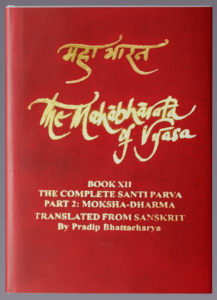
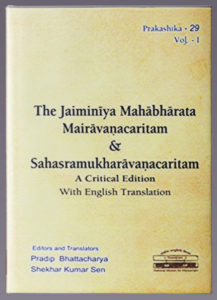
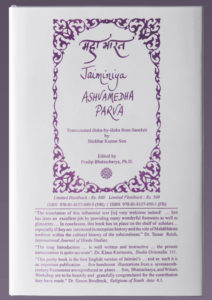
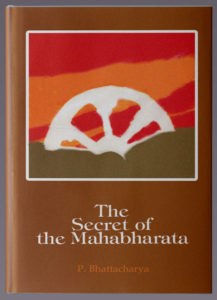
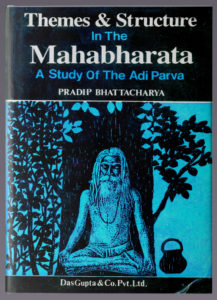
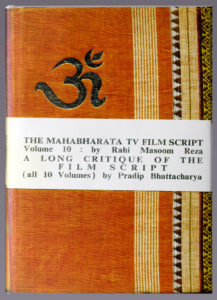
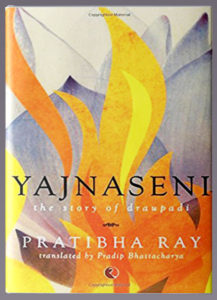
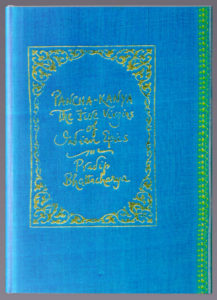
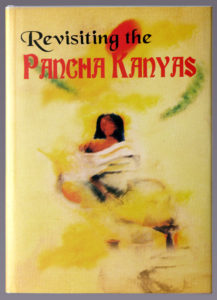
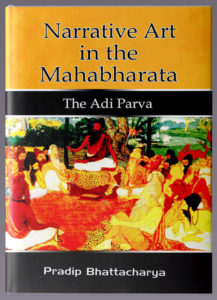
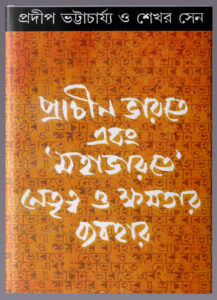
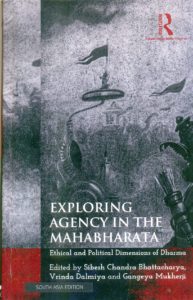
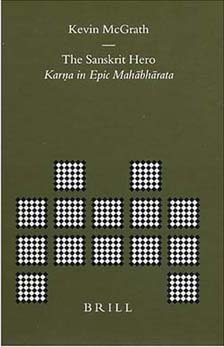
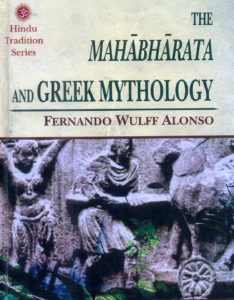 by an East India Company officer arguing that the Ramayana story was strongly influenced by the Iliad. Other than Megasthenes’ references to Indians carrying banners of Heracles and worshipping Dionysus, the Greek scholar Dios Chrysostom (40-120 AD) mentions translations of the Iliad in India. The Roman Claudius Aelianus (175-235 AD) reiterated this (e.g. the Trojan horse becoming Bhasa’s wooden elephant in Pratigya Yaugandharayana). In 1871 A.F.Weber, refuting M.H.Fauche’s proposition (supported by A.Lillie in 1912) that Homer had used the Ramayana as a guide, claimed that it was merely Buddhist legends grafted on to borrowings from Homer, an argument that W.T.Telang vigorously refuted. Weber cited Odysseus’ archery feat to win Penelope as having influenced the archery contests of Rama and Arjuna, ignoring that Rama breaks the bow and Arjuna does not shoot rivals dead. J.Lallemant argued in 1959 that the Mahabharata (MBH) influenced the Aeneid. In 1961 G.Duckworth argued that Turnus’ portrayal was based upon Duryodhana. In 1968 G.Dumezil put forward his theory of an Indo-European tri-functional ideology illustrated by the Pandavas (the dharma-king, the warrior, the grooms). Now, a Spanish professor in the University of Malaga has built up a strong case that the Homeric cycle and other Greek myths were adapted for the MBH.
by an East India Company officer arguing that the Ramayana story was strongly influenced by the Iliad. Other than Megasthenes’ references to Indians carrying banners of Heracles and worshipping Dionysus, the Greek scholar Dios Chrysostom (40-120 AD) mentions translations of the Iliad in India. The Roman Claudius Aelianus (175-235 AD) reiterated this (e.g. the Trojan horse becoming Bhasa’s wooden elephant in Pratigya Yaugandharayana). In 1871 A.F.Weber, refuting M.H.Fauche’s proposition (supported by A.Lillie in 1912) that Homer had used the Ramayana as a guide, claimed that it was merely Buddhist legends grafted on to borrowings from Homer, an argument that W.T.Telang vigorously refuted. Weber cited Odysseus’ archery feat to win Penelope as having influenced the archery contests of Rama and Arjuna, ignoring that Rama breaks the bow and Arjuna does not shoot rivals dead. J.Lallemant argued in 1959 that the Mahabharata (MBH) influenced the Aeneid. In 1961 G.Duckworth argued that Turnus’ portrayal was based upon Duryodhana. In 1968 G.Dumezil put forward his theory of an Indo-European tri-functional ideology illustrated by the Pandavas (the dharma-king, the warrior, the grooms). Now, a Spanish professor in the University of Malaga has built up a strong case that the Homeric cycle and other Greek myths were adapted for the MBH.